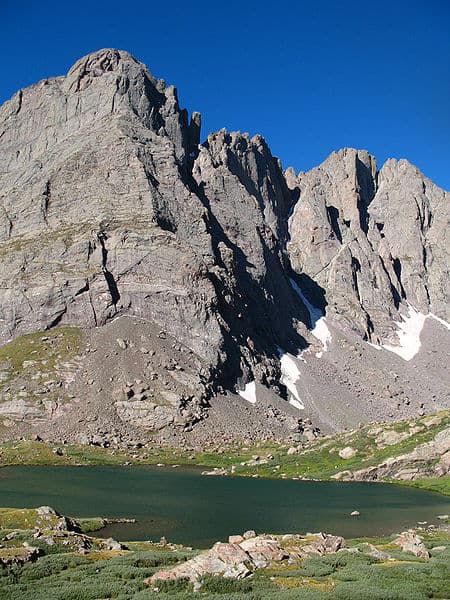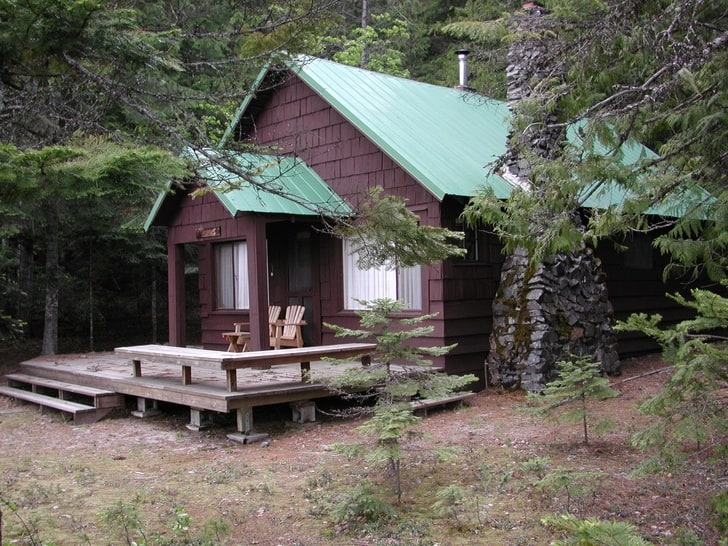Good article by Bob Berwyn on rec fees..
by Bob Berwyn on rec fees..
Also this piece on the response to the court case by the Coconino.
The Smokey Wire : National Forest News and Views
Community Sourced, Shared and Supported
Great post by Bob Berwyn on the idea of Hausberg or ski commons in the Summit County Citizens Voice here.
Why does it all matter? Skiing is a sport that forges community, cutting across political lines and ethnic distinctions and ideological boundaries. That’s important for the American West, a region that has long been managed as a resource-rich colonial outpost by an East Coast government. A Hausberg, as a community commons based on sport, is one potential starting point for building a sense of regional identity, a step on the way toward self-determination.
And
A Hausberg, or ski commons, is a place to re-affirm the roots of the sport, born not of commerce, but of athletic and aesthetic idealism, something that’s done not for money but for love, for the physical ideal it represents, pure and simple.
It appears that the quest for national consistency in summer management of ski areas has led to a specific bill (see story here). Here’s a quote.
Not all conservationists were supportive of the bill. Identifying permitted uses at ski resorts is best left to the forest planning process done at the regional level, said Louise Lasley, public lands director for the Jackson Hole Conservation Alliance.
During a forest planning process, factors such as public participation and addressing the needs of individual forests could be taken into consideration, she said.
“It seems like overkill,” Lasley said of the bill. “A federal law to prohibit or allow specific activities on leased ski areas on the forest seems Draconian, no matter what the outcome is.”
But we have a federal law for wilderness, and many want a national rule for roadless areas. Both of these allow and prohibits specific activities nationally. The question of what restrictions or sideboards should be decided nationally versus locally continues. And there is an associated question; if people agreed to do it nationally, the FS could issue national direction that might be easier than passing a bill. There must be more to this than meets the eye.
Is this a pattern? A heavily used recreation area managed by the FS charges fees, and the charges get struck down in court. Here’s an editorial about Red Rocks on the Coconino. As the writers note, it isn’t clear where the funding is going to come from.
The last time we were discussing this, it was with regard to a newspaper article here, about an effort to make part of the Angeles NF a park or recreation area. I think that the piece is an excellent description of real-world urban forest 21st century problems. Here are some quotes:
Torres blames part of the lack of resources on the fact that many of the canyon’s users are Latino.
“If these people were Anglo, there would be more resources. It is a big social justice issue,” she said.
By comparison, the Santa Monica Mountains National Recreation Area spends about 15 times more on recreation than the Angeles National Forest, according to a Michigan State University study.
Dumpis said the comparison isn’t exactly fair because of the types of recreation in question.
“I think we are getting our fair share compared with other forests. But I imagine they would all say they need more resources,” he said.
Federal funding is allocated based on park usage and park acreage, he said.
The Angeles National Forest also supplements its budget with the sale of Adventure Passes, amounting to about $1.2 million a year. And a team of volunteers also dedicate thousands of hours to the forest, Dumpis said.
I asked the author about the study she cited (“spends 15 times more”), and she gave the cite, but I couldn’t find it on the web. The study was by Robert Richardson and called Recreation Use in National Forests, Urban Population Growth and Demographic Change: The Case of the San Gabriel Mountains. If you find it, please send a link.
In my simple mind, it seems like there should be a better way to deal with intense recreation use than making an area a National Park or Recreation Area. Those designations still cost the people who will use the land, but the designation generally comes with a lot more restrictions- plus the cost to the taxpayer of changing maps, bureaucratic institutions, etc.
It just seems to me like there ought to be an easier way to get the funding that is obviously needed to manage national forests, than the painful process of watching an area degenerate until a “make the area a park so it will be treated better” movement begins.
 Here’s a piece in New West today.
Here’s a piece in New West today.
Here are some quotes:
STATE OF THE FOURTEENERS
As far as the peaks themselves are concerned, however, the USFS proposal is coming from a real place. The ecosystem at 14,000 feet is very fragile and overuse is a true problem in certain areas, particularly those summits that have easy, almost drive-up access.
“There is plenty of scientific data that shows how the effect of a human walking across the tundra is very different from someone walking across the grass in Denver or Fort Collins,” explains Ryan Hollamby, a graduate student in the Department of Geography and Environmental Studies at the University of Colorado at Colorado Springs, who has spent the past year climbing almost every one of Colorado’s 54 fourteeners. “The high country ecosystems are very fragile.”
In particular, Hollamby says, crowds at high elevations contribute greatly to increased erosion and overall pollution, both in the form of human waste and general hiker garbage. Beyond that is the sometimes unseen impact that use can have on animal movements.
“When we see bighorns down by campsites, people don’t think about how they’re changing the animals’ movements and their behaviors,” Hollamby says, explaining that many high country species are attracted to the salt found in human urine. “But we’re altering their patterns more than many people realize by not practicing good, ethical hiking.”
TOWARD A SOLUTION
But will a fee help solve the problem? So far, the consensus is “no.” Although something needs to be done to better protect the fourteeners, most watchers feel that a fee is not the best way to go about it.
“Any person who goes up [to the basin] on a busy weekend will understand why the Forest Service is doing what they’re doing,” says Hollamby, “It’s a mess up there. But there are better ways to combat it – making approaches longer, making trailheads less accessible.”
Is it about regulating people’s behavior or just keeping them out? A fundamental question for 21st Century public land management.
 (photo by Julie Sutor, Summit Daily)
(photo by Julie Sutor, Summit Daily)
Here’s a link to a great story about the Dillon Ranger District helping people learn to protect streams by changing their behavior. Given our previous discussions this week about the use of litigation as a tactic, one response would be to litigate to force the FS to prohibit dispersed camping. But that would punish the good campers, and chances are the bad would continue to do it illegally, and there will probably never be enough staffing to patrol for dispersed campers. Just a possible example of how 20th century solutions may not fit 21st century problems.
 Discussions with my coworkers are among my favorite parts of going to work each day. One thing they regularly do is ask challenging, stimulating questions.
Discussions with my coworkers are among my favorite parts of going to work each day. One thing they regularly do is ask challenging, stimulating questions.
Last week, one asked “why is there such a push to get FS recreation or heritage facilities moved to the Park Service?” “It seems to be a pattern, and what underlies that?” Here are my thoughts in response to that question. I’d be interested in others’ thoughts.
First, there are actually three patterns. One is “place based legislation divvying up areas for uses” that we have discussed on this blog, and Martin has done some fine work. The second is “Wilderness legislation” which also takes pieces of land and makes specific prescriptions. Here is a letter posted today that talks about what that feels like to a local outfitter. The third is “transfer to the Park Service” which also takes pieces of land and gives them certain kinds of management (usually recreation/visitor oriented).
Second, in some discussions on the planning rule I have gotten the impression that somehow the FS doesn’t take recreation as seriously as we might- which could lead to the idea that facilities will be better handled and budgeted for by the Park Service. When we have brought up the recreation interests of various stakeholders, sometimes the discussion goes to “we can’t treat it differently than the other multiple uses” or “we are handling that through social science.” If I were a recreationist and heard that, I would feel, to some extent, like I was being blown off.
Recreation is not just another multiple use. Recreation is something that all the people of the US can do on our federal land. We all don’t have grazing allotments, or houses that need fuelbreaks near them, let alone dams, or gas wells, or pipelines or powerlines, but we all can visit and enjoy the national forests. On every forest I’ve ever worked on, from hunting and fishing to hiking to skiing, recreation has been a key use of the national forests. Recreation is different. It is where most of the owners of the national forests interact with the land and the employees. It could easily be considered (with water) a preeminent use. It actually is a preeminent use, but for some reason it seems to be hard for the FS to admit and organizationally get behind.
Is it because many FS employees come from a vegetation background? Is it because the recreation users tend to be in conflict with each other rather than having a united front for getting funding (say, compared to State Foresters)? Is it an artifact of an internal stovepiping? What do we think we’ll have as a #1 priority for most of the landscape in 20 years? 50 years?
As I’ve said before, the number of dispersed campers on weekends in the summer in Colorado and during elk season from New Mexico to Idaho is staggering and probably uncounted. There is an important niche for recreation that is more open to more uses than in National Parks (dogs on trails, dispersed camping, OHVs). What do you think is missing for the FS to give recreation the emphasis it deserves? Or do you agree that it is not “just another multiple use?
Last weekend, I was recreating with family and got quizzed on a specific hazard tree removal project. Why did they leave the slash? Couldn’t they cut it up for firewood? Don’t they know how bad it looks near a major trailhead?
I certainly don’t know what the answers were, though I had ideas. Then when I got home, I noticed this essay from Bob Berwyn about another project. This is definitely worth a read, as Bob writes about his observations and questions about this project and its design. It’s true that Bob knows more than an average passerby; but it seems like we should be encouraging public interest and questions as a learning experience- even an approach to science (or conservation) education.
It’s great that people are interested in projects, but I have to wonder if in this day and age we could have some simple “how this project was designed and why” that could be linked to Google Earth.
Like the trailheads are on the Fourteeners website here. In general, the Fourteeners website tells you everything you want to know about those trails. You can also scan the trip reports to find out the latest conditions.
I wonder what it would take to start something like this for FS recreation or all lands recreation? Just think- you could find out that campgrounds and dispersed sites were full without driving around. You could find out that the roads or trail is still closed with snow. We could harness the power of the people who are out there (many, many more people than employees) simply by providing a place for them to leave comments.
The Park Service has visitor observation of trail conditions for Rocky Mountain National Park, so it is possible for feds to do such things (although it is kludgier than 14ers.com, in my view).
What if the Forest Service could harness the power of the internet to 1) tell the story of our projects, 2) keep visitors apprised of recreation conditions, and 3) to do some kinds of monitoring (OHVs off trails, regeneration, ?).
Do people have examples of forests and districts who have done some creative work in this arena? Please share.
Sara Gilman has this piece in High Country News on “Fees for Fourteeners.” One of the commenters suggests boxes for donations at each trailhead. I’m sure some of our readers have had experience with the donation box approach.. how has that been working?
I’m sure there is substantial literature.. perhaps a synthesis would be a good graduate student project? Seems like we have been discussing and arguing rec fees for some time now- how about trying an experiment?
People seem to generally agree that people using something should pay more than the general US taxpayer, and that what they pay should stay locally to support what they use. So we are fundamentally talking about some behavioral science around fees versus donations. We could do a cultural stratification of the country and within each culture, match some similar kinds of sites and charge fees at some and ask for donations at others and actually empirically evaluate how it works.
Here’s the Park Service page on donation boxes.
Which reminds me of an idea I had a couple of years ago. My husband and I spent the fall on various expeditions which involved dispersed camping from the Carson to the Colville (from New Mexico to NE Washington) along the Rockies. Since it was during elk season, dispersed camping was probably at its high water mark for the year. I thought if you could see the number of people camping from space, there are probably thousands or tens of thousands or more. What if we had a voluntary sticker for your car- say $60 per year – that said something like “I support the national forests.” I would buy it because it is still the best vacation deal in the country. Dispersed camping, to many of us, is better than camping in a campground.
You see families, teenagers with horses, OHVs and bikes, with grandma and grandpa-(kids in the woods), groups of hunters having their annual “spiritual retreats,” students, locals and those from far away, in total, an amazing diversity of people and interests.
How many of these people would be willing to voluntarily pay something to pay back for these experiences? Maybe we could help by making the opportunity easier and clearer (and businesses could donate coupons to give away to people who donate; or one could imagine a variety of possible partnerships..). What do you think?
PS donations of a photo of an FS donation box to post here would be greatly appreciated!
 One fundamental principle in public lands policy that I would propose is that it is much more difficult to remove or reduce an existing use, than to never have allowed it in the first place.
One fundamental principle in public lands policy that I would propose is that it is much more difficult to remove or reduce an existing use, than to never have allowed it in the first place.
At the “One Third of the Nation’s Land” Conference today at University of Colorado, the planning panel was asked to look at Chapter 13 of the report (1970) which recommended phasing out recreation residences. They did not spend any time on it as the time was taken up by other intriguing ideas, including planning and a new FS planning rule. However, the “One Third of the Nation’s Land” report did have this recommendation.
Vacation Homesites
Recommendation 95; Public lands should not hereafter be made available under lease
or permit for private residential and vacation purposes, and such existing uses should be
phased out.p 223
This recommendation was made by a bipartisan commission in 1970, and this issue is as fresh as today’s headlines..”Real Estate Debate Rages In America’s Federal Forests.” I attribute this to the power of precedence… other thoughts?